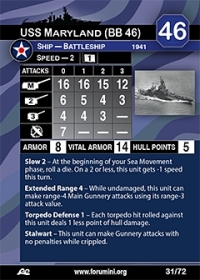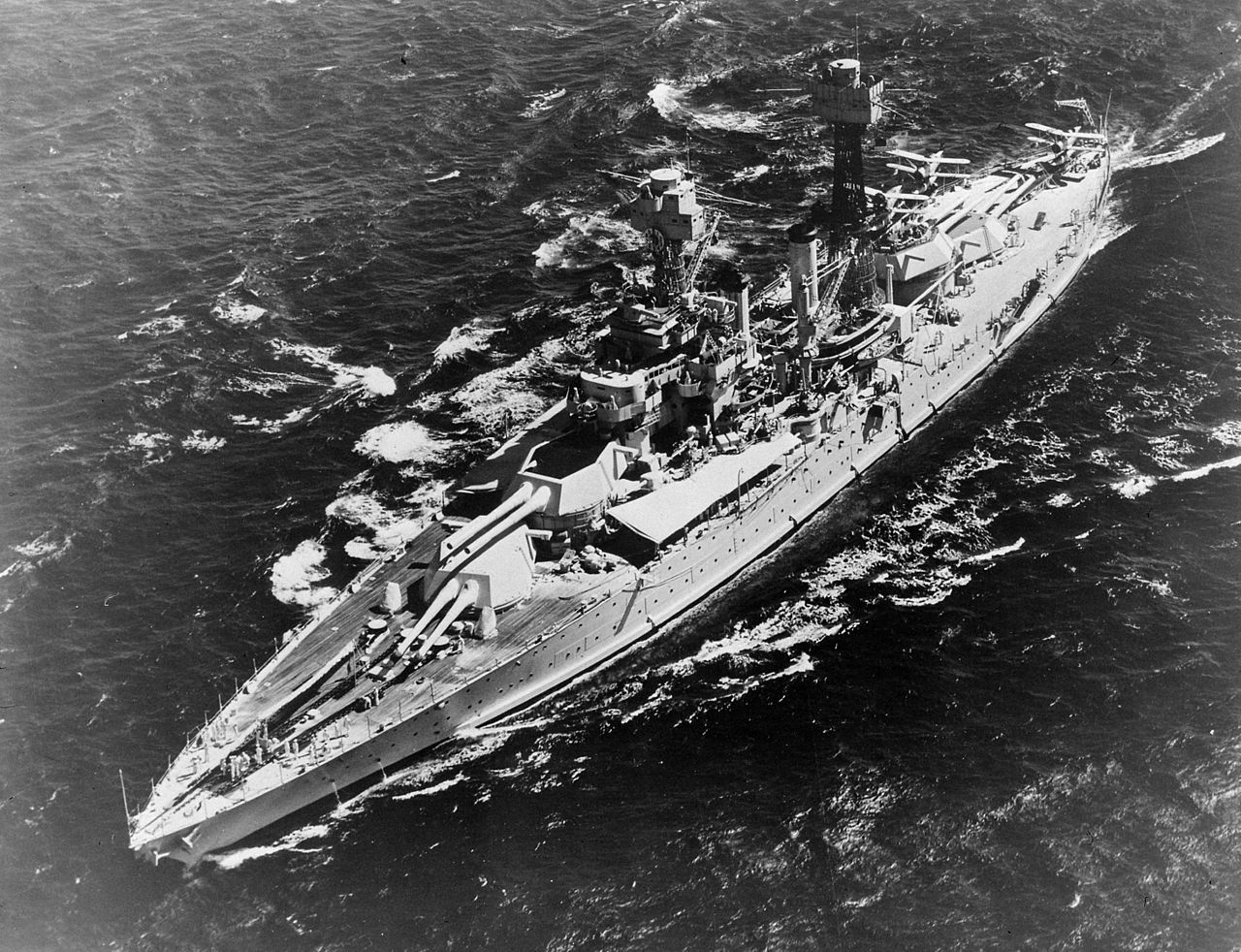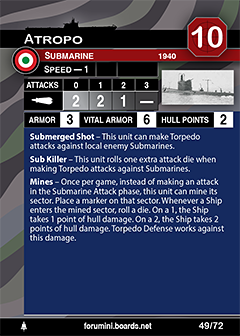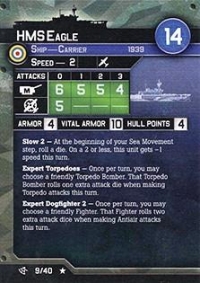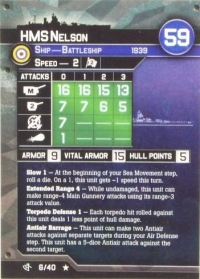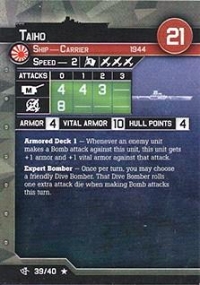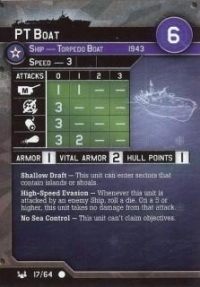Prototype: USS Maryland (BB-46), also known as "Old Mary" or "Fighting Mary" to her crewmates, was a Colorado-class battleship. She was the third ship of the United States Navy to be named in honor of the seventh state. She was commissioned in 1921, and serving as the flagship of the fleet, cruised to Australia, New Zealand, and Brazil.
She is most notable for her service in World War II. She was present on Battleship Row during the Attack on Pearl Harbor, and was lightly damaged by Japanese bombs. Returning to duty in 1942, she saw service in the Pacific War, first supporting the rest of the fleet at the Battle of Midway, and then patrolling the Fiji Islands to guard against Japanese incursion. Next, she went on the offensive, commencing shore bombardments in the Battle of Tarawa and later in the Battle of Kwajalein. During the Battle of Saipan she took torpedo damage to her bow, necessitating repairs and refits. She then participated in the Battle of Leyte Gulf where she was hit by a kamikaze. She took another kamikaze hit at the Battle of Okinawa, and was under repair at the end of World War II.
After service in Operation Magic Carpet, she was decommissioned in 1947, and sold for scrap in 1959. She received seven battle stars for World War II service.
She is most notable for her service in World War II. She was present on Battleship Row during the Attack on Pearl Harbor, and was lightly damaged by Japanese bombs. Returning to duty in 1942, she saw service in the Pacific War, first supporting the rest of the fleet at the Battle of Midway, and then patrolling the Fiji Islands to guard against Japanese incursion. Next, she went on the offensive, commencing shore bombardments in the Battle of Tarawa and later in the Battle of Kwajalein. During the Battle of Saipan she took torpedo damage to her bow, necessitating repairs and refits. She then participated in the Battle of Leyte Gulf where she was hit by a kamikaze. She took another kamikaze hit at the Battle of Okinawa, and was under repair at the end of World War II.
After service in Operation Magic Carpet, she was decommissioned in 1947, and sold for scrap in 1959. She received seven battle stars for World War II service.
Class History: The Colorado-class battleships were a group of four battleships built by the United States Navy after World War I. However, only three of the ships were completed: Colorado, Maryland, and West Virginia. The fourth, Washington, was over 75% completed when she was canceled under the terms of the Washington Naval Treaty in 1922. As such, the Colorado-class ships were the last and most powerful battleships built by the US Navy until the North Carolina class entered service on the eve of World War II.
The Colorados were the final group of Standard-type battleships, designed to have similar speed and handling to simplify maneuvers with the line of battle. (The South Dakota class which was to follow would in several ways have been a departure from this practice.) Apart from an upgrade in striking power to eight 16-inch guns, the ships were essentially repeats of the earlier Tennessee class. The Colorados were also the last American capital ships built with four turrets and twin-mounted guns. The change to larger guns was prompted by the Japanese Nagato-class battleships, which also mounted eight 16-inch guns.
All three ships had extensive careers during World War II. Maryland and West Virginia were both present during the attack on Pearl Harbor on 7 December 1941. Maryland escaped relatively unscathed; West Virginia was sunk in the shallow waters of the harbor but subsequently raised and repaired. All three ships served as artillery support ships during amphibious operations. Maryland and West Virginia were present at the last surface action between battleships, the Battle of Surigao Strait during the Battle of Leyte Gulf in October 1944. The three ships, put into the reserve fleet after the end of the war, were scrapped by the late 1950s.
The Colorados were the final group of Standard-type battleships, designed to have similar speed and handling to simplify maneuvers with the line of battle. (The South Dakota class which was to follow would in several ways have been a departure from this practice.) Apart from an upgrade in striking power to eight 16-inch guns, the ships were essentially repeats of the earlier Tennessee class. The Colorados were also the last American capital ships built with four turrets and twin-mounted guns. The change to larger guns was prompted by the Japanese Nagato-class battleships, which also mounted eight 16-inch guns.
All three ships had extensive careers during World War II. Maryland and West Virginia were both present during the attack on Pearl Harbor on 7 December 1941. Maryland escaped relatively unscathed; West Virginia was sunk in the shallow waters of the harbor but subsequently raised and repaired. All three ships served as artillery support ships during amphibious operations. Maryland and West Virginia were present at the last surface action between battleships, the Battle of Surigao Strait during the Battle of Leyte Gulf in October 1944. The three ships, put into the reserve fleet after the end of the war, were scrapped by the late 1950s.
Country: The U.S. is a country of 50 states covering a vast swath of North America, with Alaska in the northwest and Hawaii extending the nation’s presence into the Pacific Ocean. Major Atlantic Coast cities are New York, a global finance and culture center, and capital Washington, DC. Midwestern metropolis Chicago is known for influential architecture and on the west coast, Los Angeles' Hollywood is famed for filmmaking.


